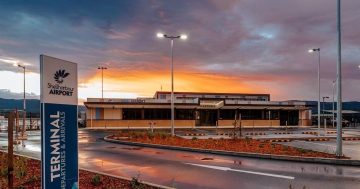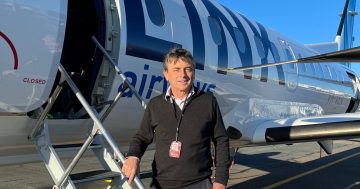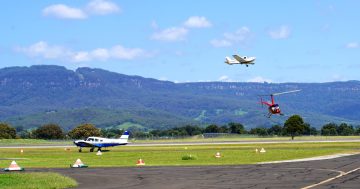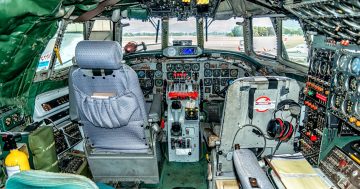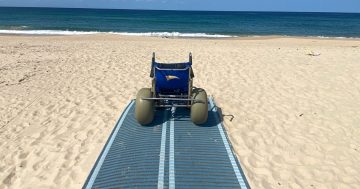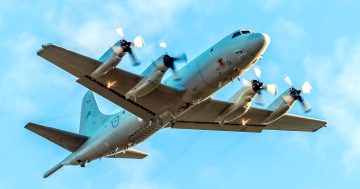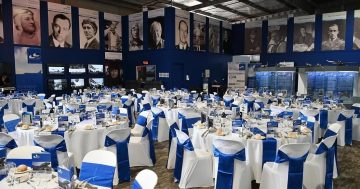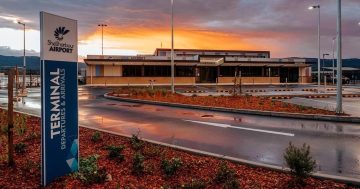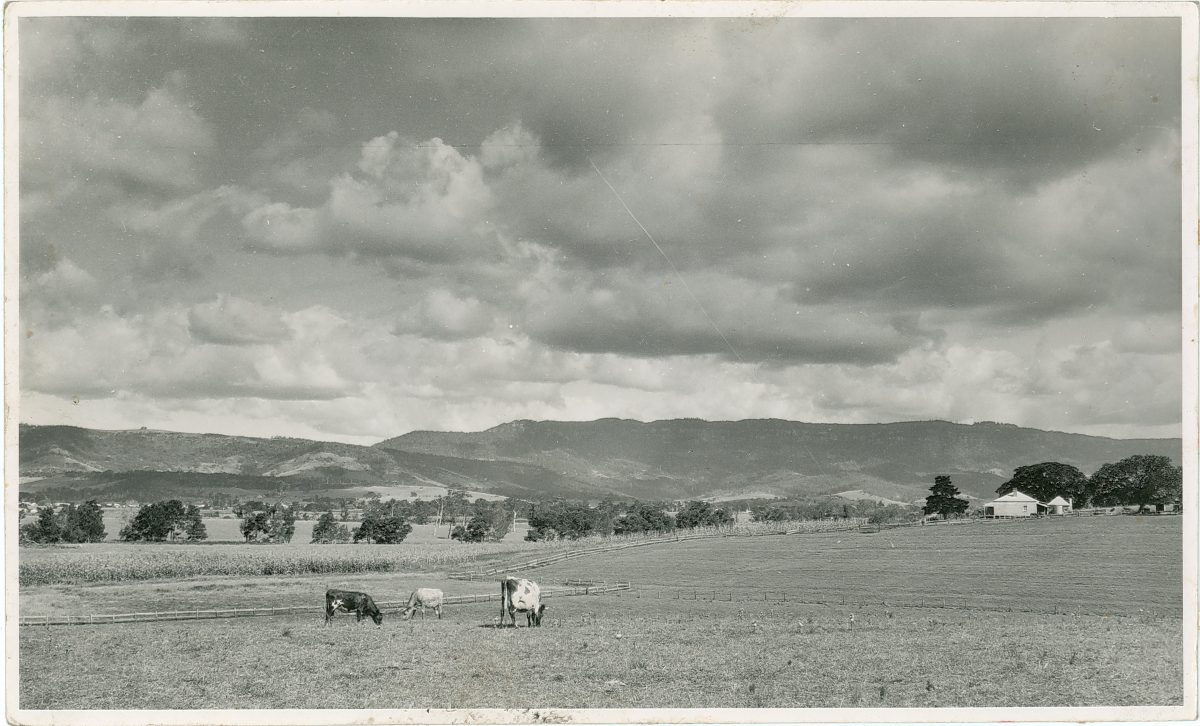
Cows grazing in the paddocks of Marks Villa, now the site of Shellharbour Airport. Photo: Discover Shellharbour.
Long before planes touched down at Shellharbour Airport, the land on which it now sits was paddocks, part of the first free land given away in the fledgling colony.
In 1816 Governor Macquarie established 22 free land grants in the area and according to Discover Shellharbour, the first grant recipient was Andrew Allan in 1817.
Allan received a 700 acre (283 ha) grant and called his property Waterloo. It appears he didn’t own it for long. His neighbour on the western side of his land was Samuel Terry, a former convict who became something of a real estate mogul in the early 1800s.
Terry named his farm Terry’s Meadows and his land holdings expanded again when Governor Macquarie granted him 2000 acres (809 ha) in 1821.
According to the Australian Dictionary of Biography, Terry established a bloodstock stud on the Illawarra land.
Between 1817 and 1820, Terry held more than one-fifth of the total value of mortgages in the colony, more than the Bank of NSW, and earned himself the title of The Botany Bay Rothschild.
Samuel Terry died in 1838 and his land went to his nephew John Terry Hughes, who changed the name of his property to Albion Park.
By the early 1900s the Albion Park Rail airport land was owned by John Russell and leased to John and Sarah Johnston who worked it as a dairy farm.
Johnston eventually purchased the property in 1916 and the family bred Australian Illawarra Shorthorn cattle, successfully exhibiting at South Coast shows for more than 30 years.
However, part of their property was resumed during World War II to allow the Department of Defence to build a RAAF pilot training facility.
In 1942, the Marks Villa homestead was relocated 2 km away to an area behind the Ravensthorpe historic home.
After the war, the airport was handed over to the Department of Civil Aviation.
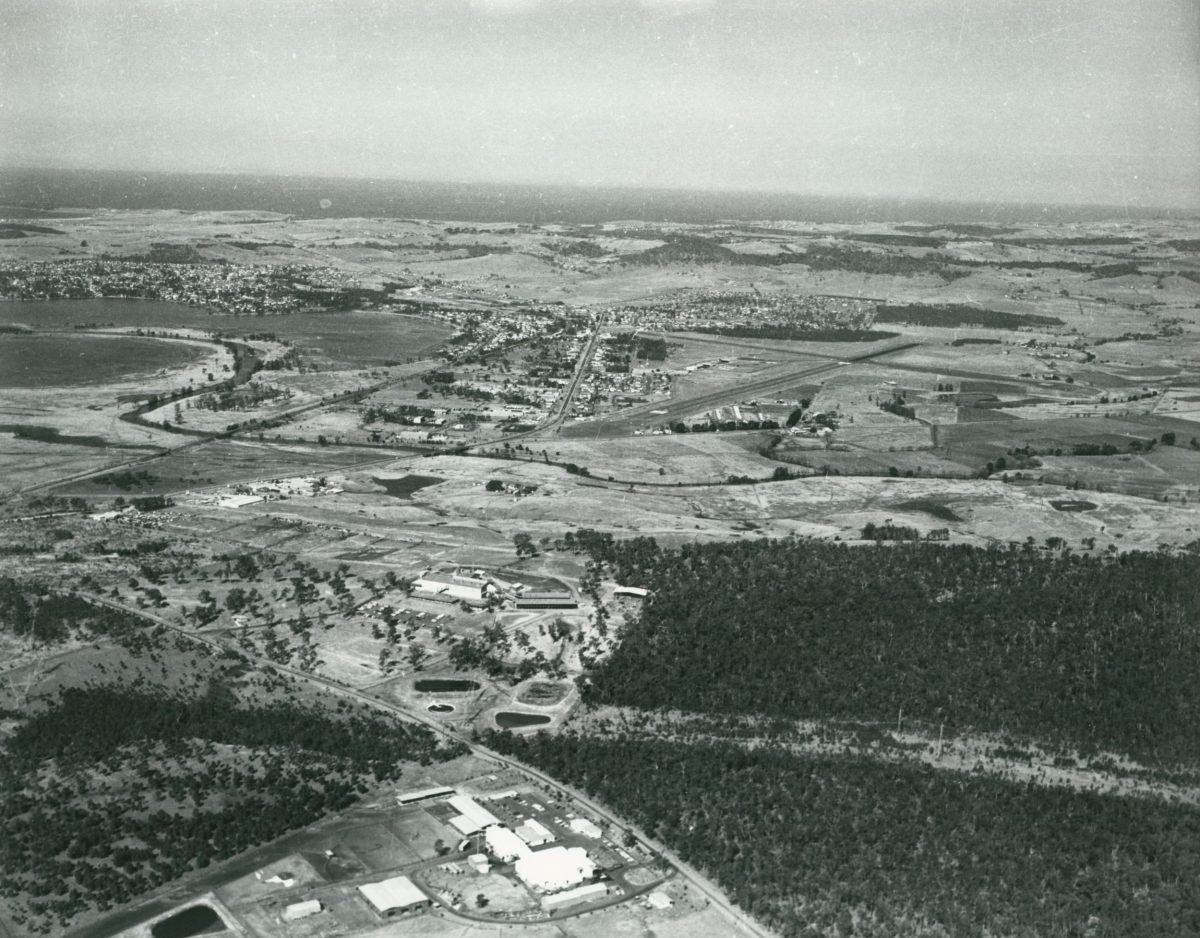
A 1977 aerial shot of the Albion Park area, including the airport, taken from Yallah looking south. Photo: Discover Shellharbour.
According to Discover Shellharbour, Trans Australian and then Australian National Airlines initially ran services through the airport to Canberra and Melbourne, however, these services were withdrawn in 1950.
In 1960 Shellharbour Municipal Council was granted permissive occupancy of the aerodrome and in 1962 the ownership was transferred to council under the Commonwealth Aerodrome Local Ownership Plan.
Various charter and regular services, training and maintenance facilities operated from the aerodrome, which even received the royal treatment in 1970 when Queen Elizabeth II visited as part of her tour of Australia.
Over the years a number of airlines started running domestic services out of Albion Park, only to withdraw and in some cases leave passengers high and dry and out of pocket.
In the 1970s Southbank Aviation commenced services to Canberra, Melbourne and Newcastle, however the company relocated to Sydney in the late 1970s.
Things settled a little between 1979 and 1999, when two airlines operated regular services to Canberra and Melbourne.
In 2005, following a major upgrade of the runway and navigational aids, QantasLink commenced services to Melbourne using a Dash 8 turbo-prop 36-seat aircraft. The service only lasted until July 2008.
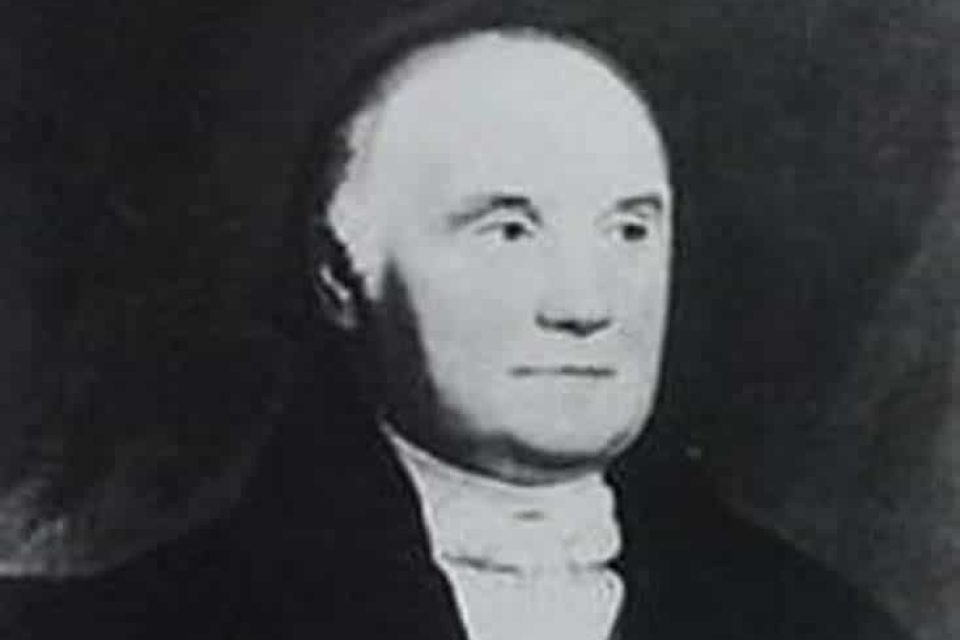
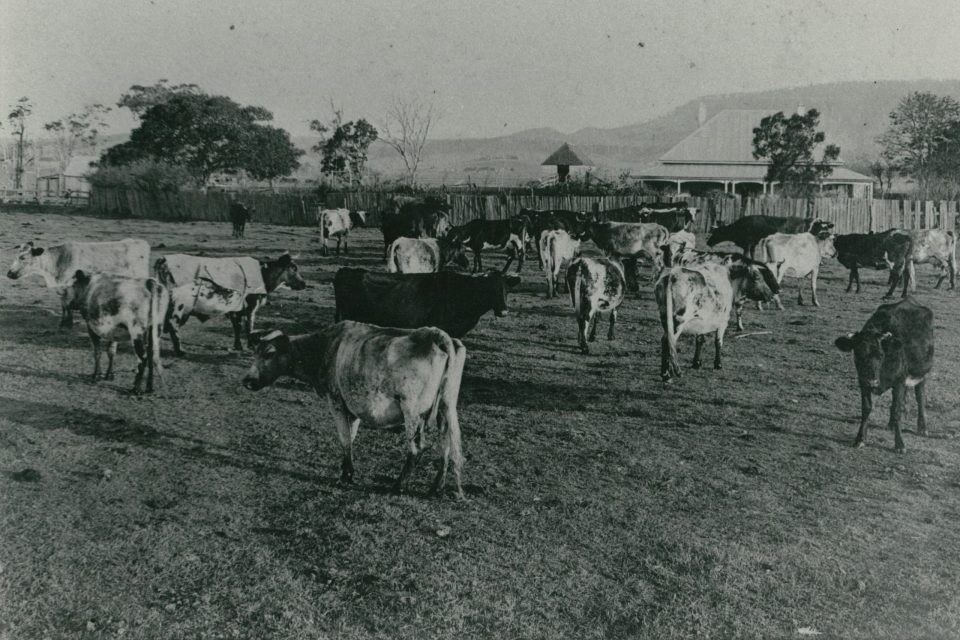
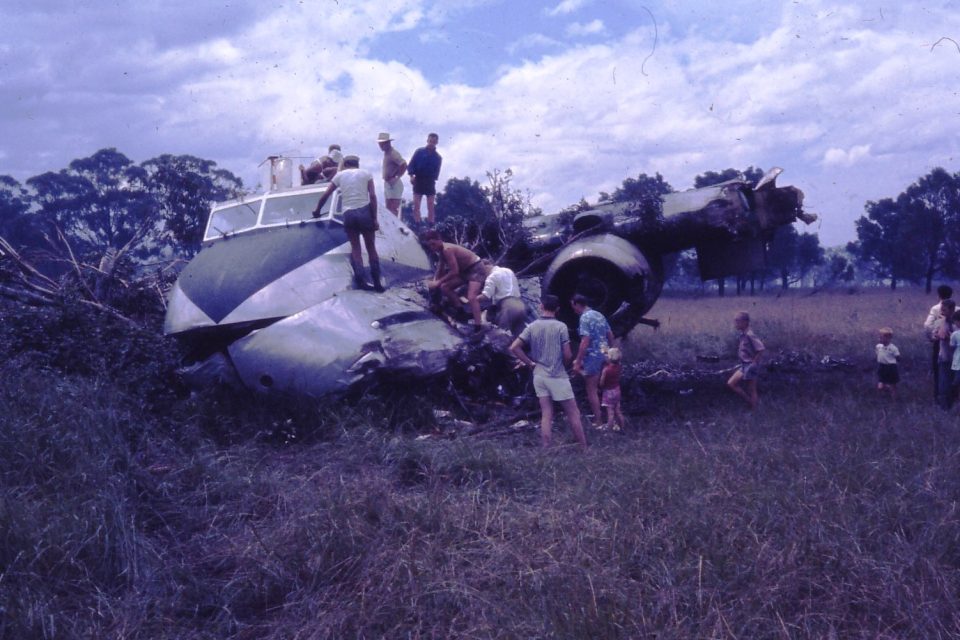
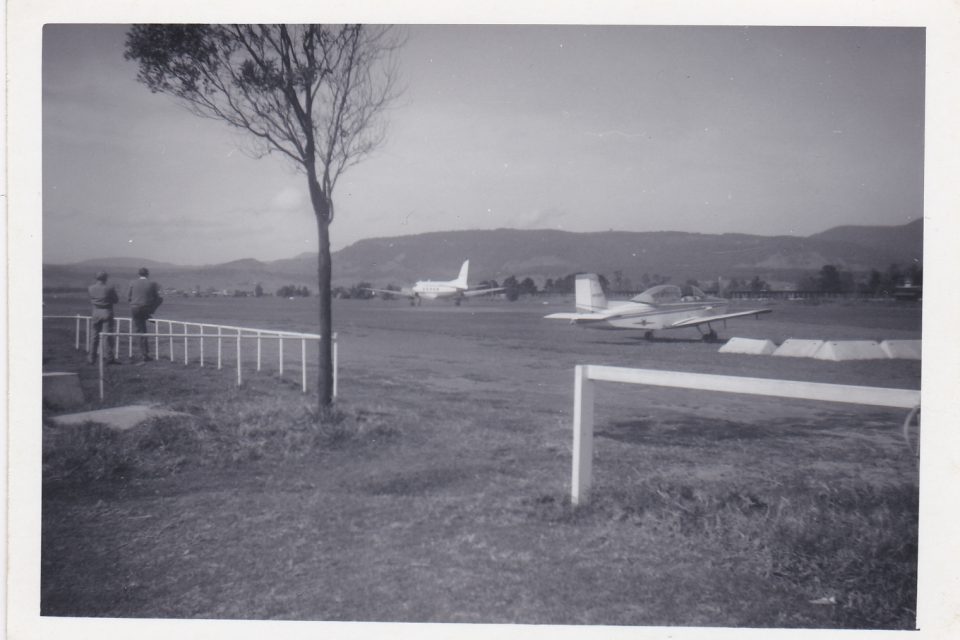
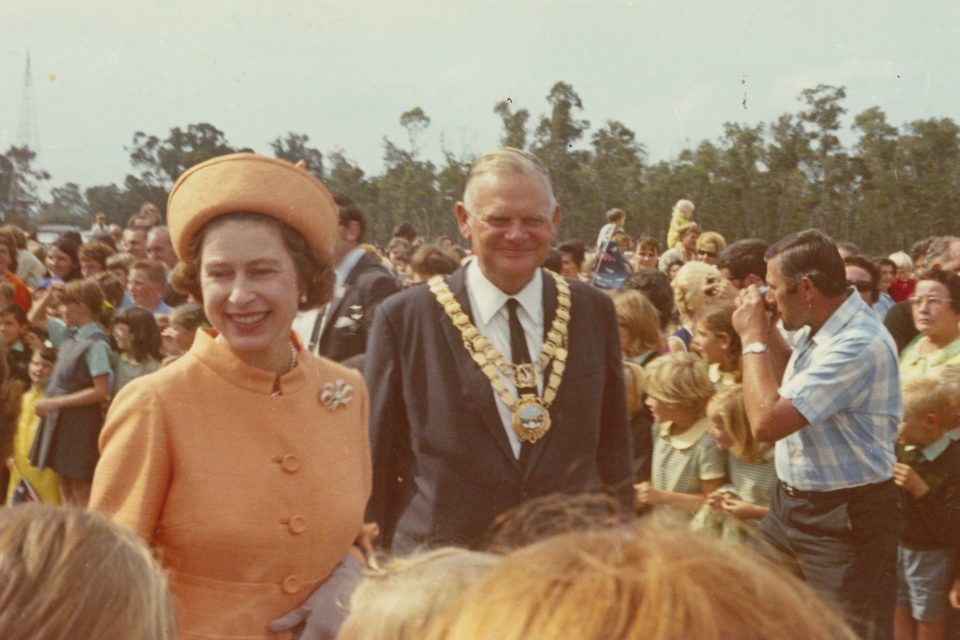
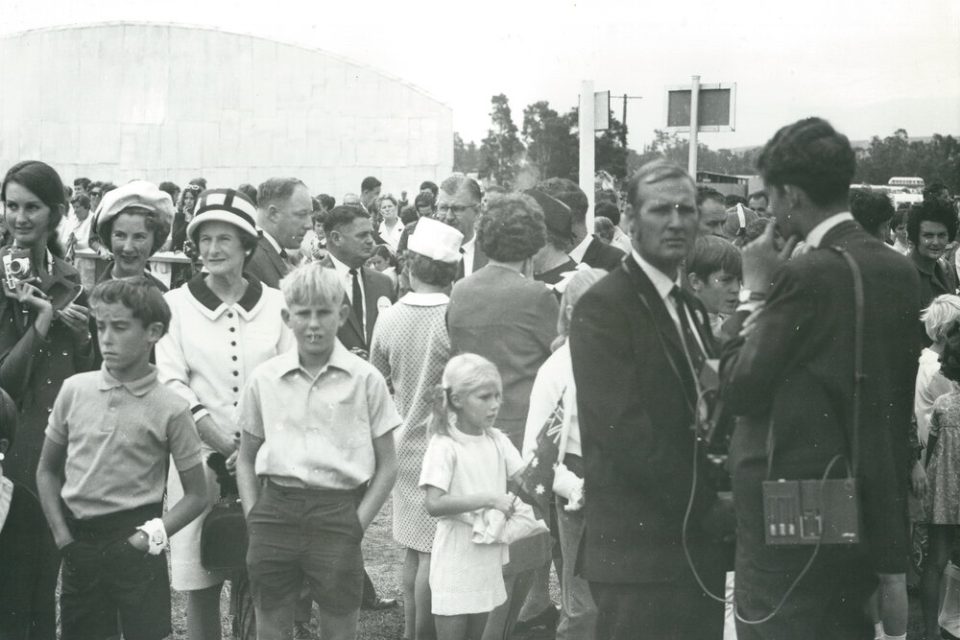
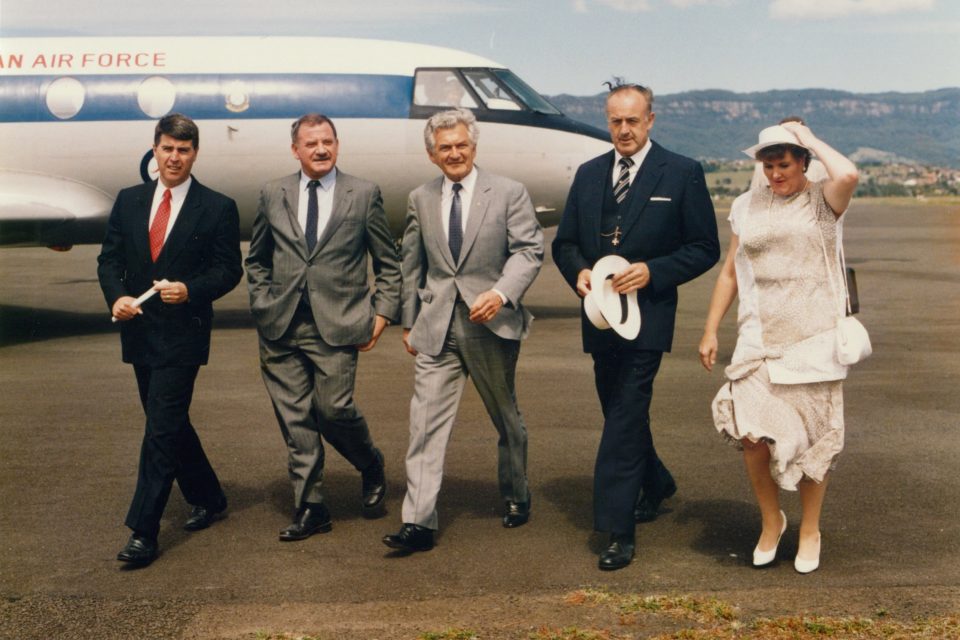
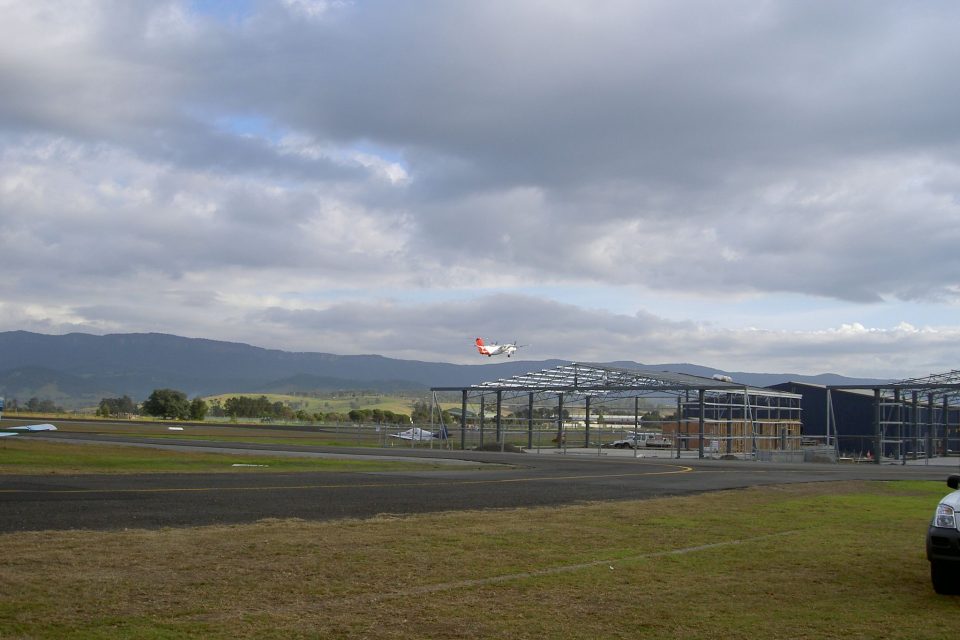
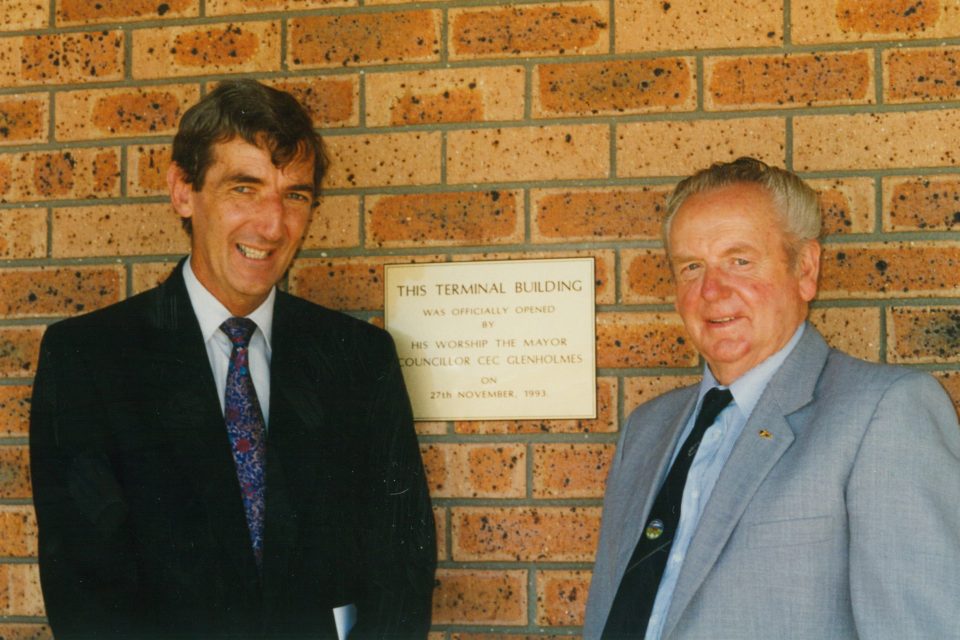
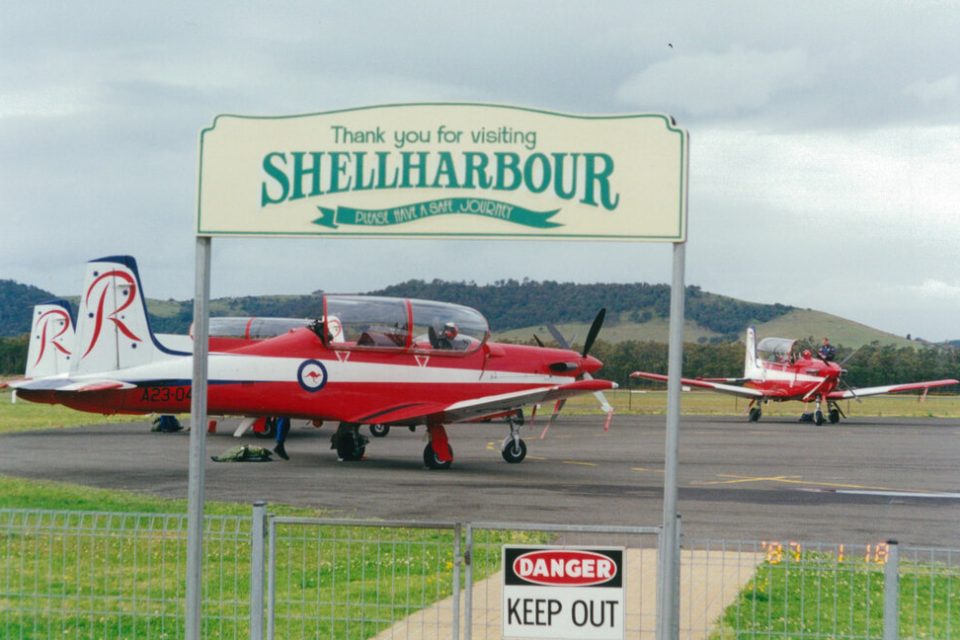
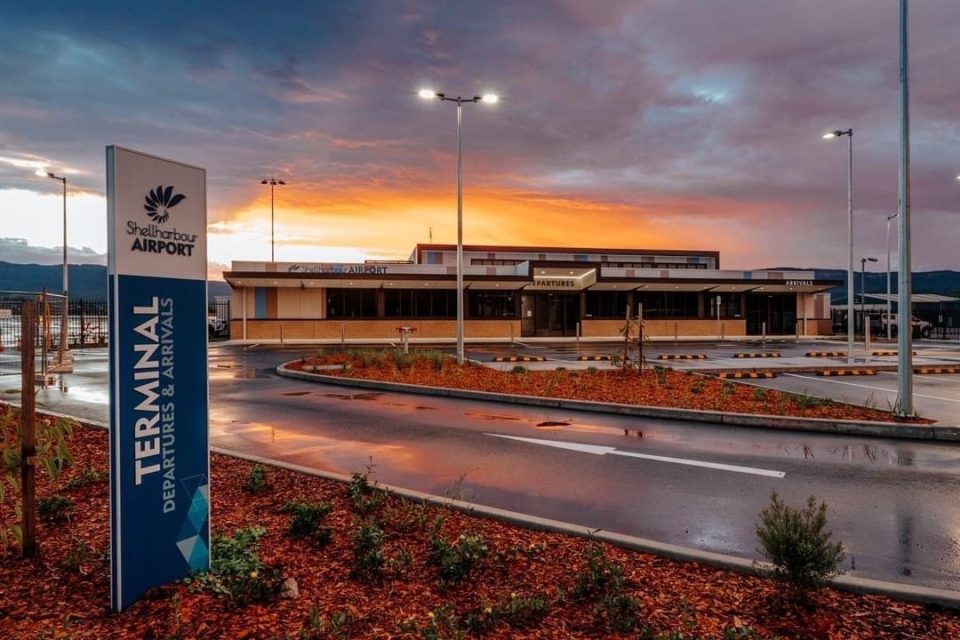
Regional airliner JetGo arrived in late 2017, only to leave almost as quickly in mid-2018.
The current carrier Link Airways came on board in late 2018 as Fly Corporate, with services to Melbourne and later to Brisbane. Not only does the carrier offer free food and drinks, but parking at the airport is free and in comparison to driving to Sydney, Illawarra travellers can be home quicker than it would take them to get out of the Kingsford Smith carpark chaos.
The airport’s most popular and well known tenant is the Historical Aircraft Restoration Society (HARS) which relocated from Bankstown in 2000 with its collection of historic aircraft and aviation memorabilia. The all-volunteer group mainly consists of active and retired aircraft engineers and pilots, as well as aviation professionals and enthusiasts.
The organisation’s move to Albion Park was followed by the first version of what would become one of Australia’s largest air shows, Wings Over Illawarra. The event, rebranded this year to Airshows Downunder Shellharbour, is among the Illawarra’s premier tourist drawcards.
It showcases the best of modern Defence Force aircraft, civil aerobatics performers, restored historic and warbird aircraft and ground displays.
In 2019, work started on more than $20 million worth of improvements at the airport, including runway overlays and lighting, additional aircraft parking capacity, the foundations of an aviation business park and a new passenger terminal building.
The terminal opened in February 2021 and later that year, the airport was named Australia’s best Small Regional RPT Airport at the Australian Airport Association’s National Airport Industry Awards 2021.

A much more modern-looking Albion Park Rail, airport and surrounding areas. Photo: Chilby Photography.
The airport was also recognised for its environmentally sustainable practices, receiving a highly commended sustainability award.
Today Shellharbour Airport is home to a diverse range of successful businesses including the passenger services and a light aeronautics industry that provides tourism, maintenance and engineering services for aircraft ranging from ultra-light to medium size turbo prop and jet aircraft.
In the last financial year about 36,500 aircraft movements were recorded at the airport.
In the next few decades it’s expected that the precinct will be a “vibrant business hub leveraging the operations at Shellharbour Airport, which can lead regional economic development, tourism, and employment”.
Shellharbour Council has prepared a draft master plan for the airport and has invited the community to provide feedback on proposals including options to allow larger passenger planes to operate. Comment closes on Friday 26 April.
Shellharbour Airport has been known by many names in its 80-plus years – Albion Park Airport, Illawarra Regional Airport, Wollongong Airport – but its roots have always been in an Albion Park paddock used for herding cows rather than landing planes.









